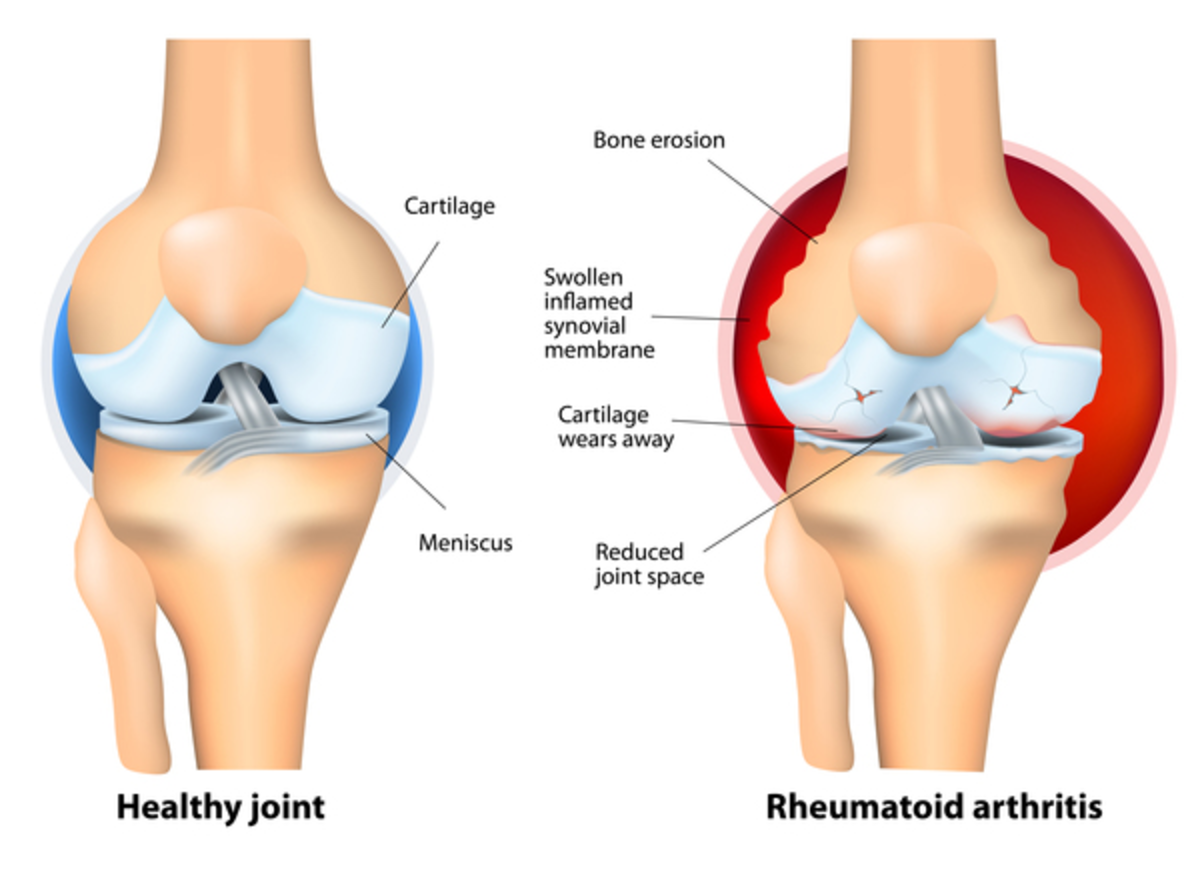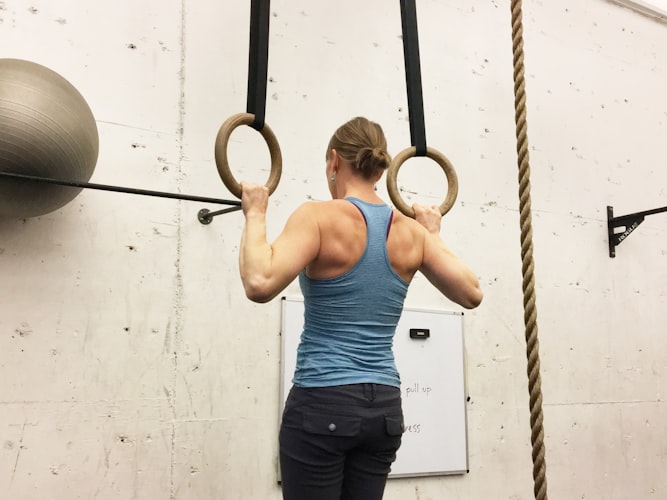5 Life-Enhancing Benefits of Strength Training for Adults Over 55
Muscle and bone loss are just two of the problems older adults face in their later years. Sedentary lifestyles, unhealthy eating habits, chronic stress, and other factors only make these issues worse.
Many older adults start an exercise program later in life to reduce the risks of potential or existing health problems. Heart attacks and other serious medical events can be a startling wake-up call.
Strength training, along with regular aerobic activity, can be a powerful way to prevent many chronic and degenerative diseases.
The following are just some of the life-enhancing benefits that a well-designed strength training program can give you...
1. Stronger Muscles
You probably already know strength training builds and maintains muscle weight. As described in my previous post, losing muscle is one of the biggest contributors to the loss of function and a decline in health.
As a person becomes weaker, they become less active...leading to further muscle loss. This also decreases their ability to use of calories, contributing to weight gain.
Stronger muscles protect the joints of the body. Muscle weakness can cause the hips, spine, and shoulder to be less stable and more prone to injury.
A strong body withstands the stress of daily activities.
2. Relief From Chronic Pain
Many chronic pain issues come from muscle weakness and muscle imbalances. A muscle imbalance occurs when muscles work harder than they should while their opposing muscles become weak.
This disrupts the balance in the length and tension of these muscles and increases the loads placed on the joints.
Over time, this can damage cartilage and connective tissues, compress nerves, and lead to painful bone spurs.
Weakness in the core muscles can cause the pelvis and spine to become unstable, further increasing the frequency of pain symptoms and the risk of future injuries.
Along with a carefully designed stretching program, strength exercises can correct muscle imbalances to restore the function and integrity of the joints.
This helps improve posture, which has many secondary health benefits such as better breathing and less fatigue.
3. Reduce the Risk of Falls
The risk of falling is a serious concern for older adults. It can cause strains, fractures, trauma, and other injuries.
Stronger muscles improve balance and coordination. The right exercises can train muscles to work together to carry out many functional movements needed in everyday life.
Isolation exercises and machine-based training can prevent you from improving balance and function if they’re overused.
These methods have their time and place, but for older adults, strength exercises that force them to These methods have their time and place, but for older adults, strength exercises that force them to support their own bodyweight and involve all of their muscles are more beneficial in the long run.
Full-body exercises can be used safely, and external weights should only be introduced once you’ve mastered the fundamental movement patterns with lower weights or bodyweight alone.
These movement patterns are:
- Squatting
- Lunging
- Bending
- Pushing
- Pulling
- Rotating
This approach to training prioritizes balance and coordination before strength...building a foundation for constant improvement and giving you the maximum benefits without the risk of injury.
4. Increase Bone Density
Older adults (especially women) are at a higher risk for developing osteoporosis. But strength training has been shown to increase their bone density.1, 2, 3, 4
Also, a loss of muscle coupled with an increase in body fat can contribute to osteoporosis.5
Osteoporosis is a disease resulting in the loss of bone minerals and proteins over time. This makes bones weak and more prone to fractures.

Osteoporosis occurs when the bones become more porous, increasing the risk of fracture in older adults.
But strength training places a positive form of stress on the bones, which causes them to become stronger.
Women are at a higher risk of developing osteoporosis primarily due to the hormonal changes that occur as they age.
The significant drop in estrogen seen in menopause raises the risk higher than is seen in older men.
But women also tend to avoid strength training out of fear of “bulking up” or “looking manly”.
Knowing how strength training can protect women and men from the threat of osteoporosis will support healthy aging.
5. Arthritis Relief
Arthritis is a collective term for conditions that cause inflammation, pain, and restrictions in the body’s joints. Osteoarthritis and rheumatoid arthritis are just two common examples.
Older adults with arthritis lose their ability to perform many basic activities with any sense of ease or comfort.
This causes them to move less, causing further muscle loss and contributing to the onset of many other health conditions.

Rheumatoid arthritis results in erosion of the bone and cartilage, inflamed joint membranes, and less space between the joints.
In the past, doctors have warned older adults with arthritis to avoid weight-bearing exercises.
But that’s changing.
Research has shown that older adults with osteoarthritis experienced relief from pain and improved function from strength training.6
Other benefits in these adults included greater muscle strength, better function, and the ability to carry out their daily activities.
Although the research hasn’t determined exactly how strength training benefits arthritis sufferers, these results highlight the importance of starting a strength exercise program.
Other conditions that can benefit from strength training include:
- Diabetes
- Fibromyalgia
- Strokes
- Cardiovascular Disease
If you’re an adult over the age of 55, incorporating strength training into your exercise routine goes a long way in preventing and rehabilitating common aging health issues.
Getting rid of the misconceptions about strength training is the first step for most people. But understanding the many ways it can benefit your health will motivate you to get started sooner than later.
It’s never too late to start exercising, and the right program that incorporates both endurance and strength training will give you the best results to get the most out of your later years.
Darwin Ruiz helps individuals use exercise and lifestyle changes to manage chronic medical conditions like hypertension, disc herniations, and total joint replacements. If you'd like to learn more about Medical Exercise and Holistic Lifestyle Coaching, click here to schedule a complimentary phone/video consultation today.
References
(1) Kerr, D., Ackland, T., Maslen, B., Morton, A., & Prince, R. (2001, January 01). Resistance Training over 2 Years Increases Bone Mass in Calcium‐Replete Postmenopausal Women. Retrieved from <https: data-preserve-html-node="true"//onlinelibrary.wiley.com/doi/full/10.1359/jbmr.2001.16.1.175>
(2) Rhodes, Martin, Donnelly, Warren, J., & Elliot, J. (2000, February 01). Effects of one year of resistance training on the relation between muscular strength and bone density in elderly women. Retrieved from <https: data-preserve-html-node="true"//bjsm.bmj.com/content/34/1/18.short>
(3) Nelson, M. E. (1994, December 28). Effects of High-Intensity Strength Training on Multiple Risk Factors for Osteoporotic Fractures. Retrieved from <https: data-preserve-html-node="true"//jamanetwork.com/journals/jama/article-abstract/384959?redirect=true>
(4) Strength training increases regional bone mineral density and bone remodeling in middle-aged and older men. (n.d.). Retrieved from <https: data-preserve-html-node="true"//www.physiology.org/doi/abs/10.1152/jappl.1993.74.5.2478>
(5) Baechle, T. R., Westcott, W. L., & Westcott, W. L. (2010). Fitness Professional’s Guide to Strength Training Older Adults. Champaign, IL: Human Kinetics.
(6) Baker, K. R., Nelson, Felson, Layne, J. E., Sarno, & Roubenoff, R. (2001, July 01). The efficacy of home based progressive strength training in older adults with knee osteoarthritis: A randomized controlled trial. Retrieved from <http: data-preserve-html-node="true"//www.jrheum.org/content/28/7/1655.short>
Image Credits
- Photo by GMB Fitness on Unsplash
- BruceBlaus, CC BY-SA 4.0, via Wikimedia Commons
- National Library Of Medicine US, Public domain, via Wikimedia Commons
